MSF at 50 - Half a Century of Medical Humanitarian Action
Photo Story by Dr Christos Christou, International President, Médecins Sans Frontières
Editor's Note: This article appeared almost a year ago on the 50th Anniversary of MSF. We are posting it again here as it provides many of the photos which appear in the photo exhibition mentioned in the companion article Témoignage of the photograph:
.....
It’s been 50 years since Médecins Sans Frontières (MSF) was started by an intrepid group of French doctors and journalists. Three hundred volunteers made up MSF when we started in 1971; half a century later in 2021, there are nearly 65,000 of us.
A lot has changed in 50 years. What has changed are the contexts. We see people living in poverty; we see communities excluded in places where we would never have imagined that MSF would have to work one day.
Also, we know that we don’t enjoy acceptance from all parts of society, as we might have done in the past. When we try to save lives on the Mediterranean Sea, we are penalised and accused of helping people-smugglers. Several times this basic human act, of helping others, has been criminalised and we have even been attacked. What hasn’t changed since those first days is that we stand in solidarity with our patients. That medical action comes first, which aim to alleviate the suffering of those people who are most excluded from accessing medical care.
What makes us quite different from other organisations has always been our commitment to bearing witness and speaking out. It means we must have a sharp voice and political positioning, which may sometimes be best expressed by not talking at all. We also do advocacy at bilateral levels, where we meet people behind closed doors.
We know that our decisions come with political and financial costs. Our compass, however, still (and always will) guides us towards the needs of patients and how can we meet them. These are challenges we didn’t have 20 or 30 years ago. This is the reality of today.
- Dr Christos Christou, MSF International President
.....
It’s been 50 years since Médecins Sans Frontières (MSF) was started by an intrepid group of French doctors and journalists. Three hundred volunteers made up MSF when we started in 1971; half a century later in 2021, there are nearly 65,000 of us.
A lot has changed in 50 years. What has changed are the contexts. We see people living in poverty; we see communities excluded in places where we would never have imagined that MSF would have to work one day.
Also, we know that we don’t enjoy acceptance from all parts of society, as we might have done in the past. When we try to save lives on the Mediterranean Sea, we are penalised and accused of helping people-smugglers. Several times this basic human act, of helping others, has been criminalised and we have even been attacked.
What makes us quite different from other organisations has always been our commitment to bearing witness and speaking out. It means we must have a sharp voice and political positioning, which may sometimes be best expressed by not talking at all. We also do advocacy at bilateral levels, where we meet people behind closed doors.
We know that our decisions come with political and financial costs. Our compass, however, still (and always will) guides us towards the needs of patients and how can we meet them. These are challenges we didn’t have 20 or 30 years ago. This is the reality of today.
- Dr Christos Christou, MSF International President
How it Started - 22 December 1971
 |
| Médecins Sans Frontières (MSF) is founded in 1971 in France by a group of doctors and journalists in the wake of war and famine in Biafra, Nigeria. D.R.SHARE |
It’s simple really: go where the patients are... At the time it was a revolutionary concept because borders got in the way. It’s no coincidence that we called it ‘Médecins Sans Frontières’.BERNARD KOUCHNER, MSF CO-FOUNDER
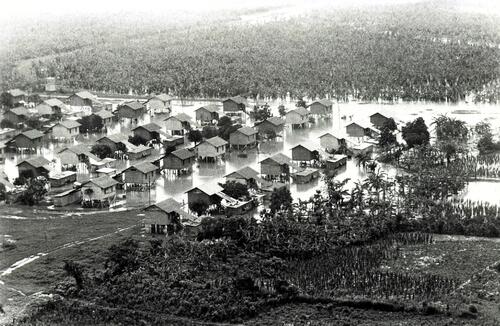
We launch our first long-term medical response following Hurricane Fifi, which causes between 10,000-30,000 deaths. Honduras, 1974.© SIPA-PRESS
Our first mission is in Nicaragua, offering medical support after a devastating earthquake kills between 10,000 to 30,000 people. Our teams then go on to set-up a relief mission to help people in Honduras, after Hurricane Fifi causes major flooding and kills thousands of people.
In 1975 we set-up our first large-scale medical programme during a refugee crisis – providing medical care for Cambodians seeking sanctuary from Pol Pot’s oppressive rule. As war breaks out and ravages Lebanon, we also provide lifesaving care for war-wounded people in the conflict.
FIRST DECADE01/ 10

We launch our first long-term medical response following Hurricane Fifi, which causes between 10,000-30,000 deaths. Honduras, 1974.© SIPA-PRESS
The first decade: 1972 - 1981
MSF is officially created on 22 December 1971, made up of 300 volunteers: doctors, nurses and other staff, including the 13 founding doctors and journalists.Our first mission is in Nicaragua, offering medical support after a devastating earthquake kills between 10,000 to 30,000 people. Our teams then go on to set-up a relief mission to help people in Honduras, after Hurricane Fifi causes major flooding and kills thousands of people.
In 1975 we set-up our first large-scale medical programme during a refugee crisis – providing medical care for Cambodians seeking sanctuary from Pol Pot’s oppressive rule. As war breaks out and ravages Lebanon, we also provide lifesaving care for war-wounded people in the conflict.
FIRST DECADE01/ 10
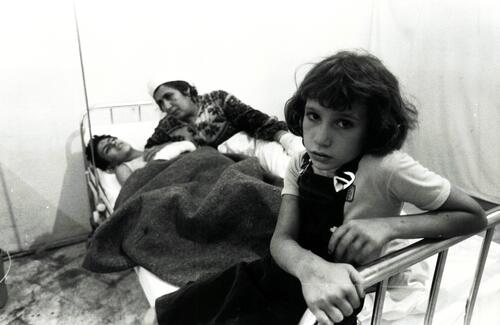
Our teams carry out surgical and functional rehabilitation activities for war wounded people in Beirut. Volunteers work first in different health centres, then in an underground room that is converted into an operating theatre. Lebanon, 1976.ARNAUD WILDENBERG
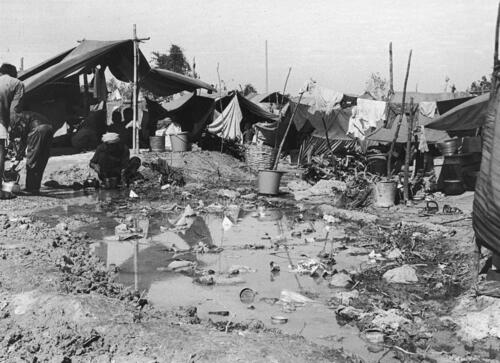
The government of Myanmar launches the King Dragon Operation against the Rohingya minority. While around 250,000 Rohingya refugees seek refuge in neighbouring Bangladesh our teams provide medical care where we can. Bangladesh, 1978.GENERIC MSF
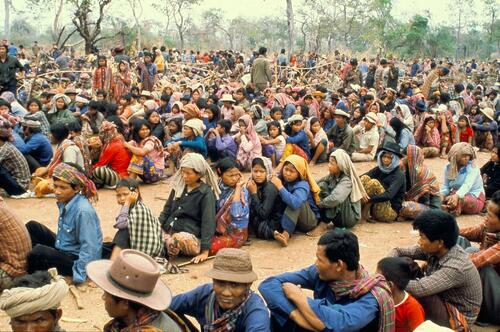
Within a few weeks, the Khao I Dang city in Thailand receives around 160,000 Cambodian refugees. We provide outpatient and inpatient consultations, as well as obstetric services. Thailand, 1979.GENERIC MSF
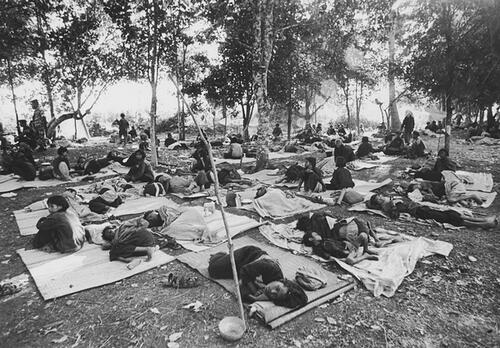
As thousands of Cambodian refugees flee the Khmer Rouge regime and Vietnamese occupation, our teams are on hand to provide healthcare. Cambodian/Thai border, 1979.MSF
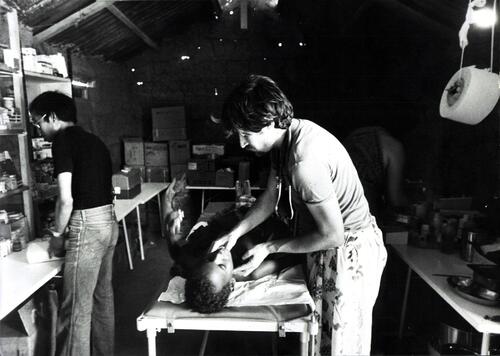
Our teams carry out consultations and provide nutritional services to thousands of refugees from Ogaden in Ethiopia living in nine refugee camps. Somalia, 1980.JULIEN QUIDEAU

In response to the drought and malnutrition that hits Sudan, our teams provide medical care to refugees and displaced people in the country, including nutritional support and surgical care. Sudan, 1980.GENERIC MSF
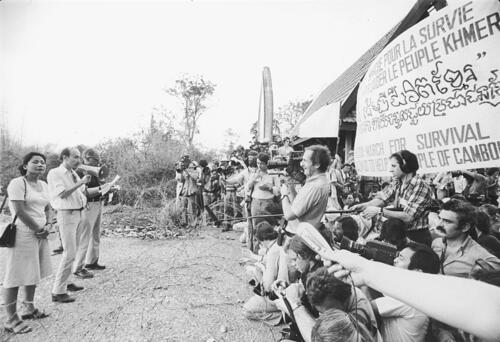
MSF staff organise a march in an attempt to bring food and medicines to survivors of the Khmer Rouge regime. Cambodia, 1980.PATRICE COTTEAU

Claude Malhuret, Xavier Emmanuelli and Rony Brauman, during the Cambodian ‘March for Survival’ - aiming to draw attention to the conditions for people in Cambodia. Cambodian/Thai border, 1980.GENERIC MSF
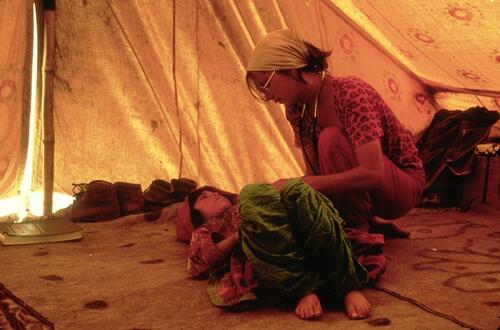
During the Soviet-Afghan war, 85 MSF volunteers travel to Paktia, Nuristan and Hazarajat provinces to establish hospitals and dispensaries. Afghanistan, 1981.GENERIC MSF
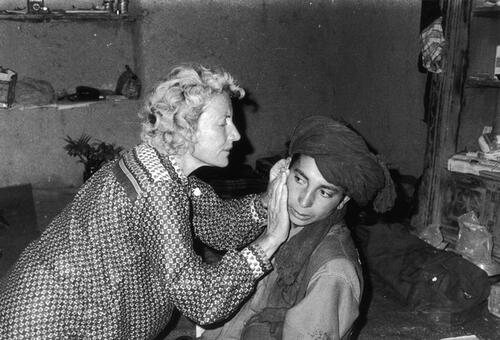
An MSF doctor examines the ear of a patient in one of the dispensaries that our teams establish during the Soviet-Afghan war. Afghanistan, 1981.GENERIC MSFSHARE
We are here to demand protection for these civilians, these unarmed people.CLAUDE MALHURET, PRESIDENT OF MSF, DURING THE MARCH FOR SURVIVAL OF CAMBODIA, 1980
TWEET THIS
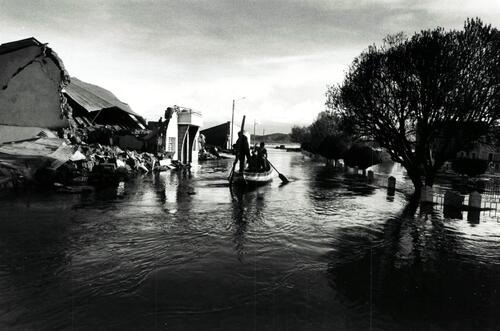
The towns of Puno, Ucayali and Huanuco are severely damaged by floods that kill dozens of people and leave thousands of others homeless. Peru, 1986.© PATRICK AVENTURIER
The second decade: 1982 - 1991
Our medical activities continue to grow in the Eighties, as we initiate a medical response to the famine in Ethiopia, where we actively speak out against the government who forcibly displace people and divert humanitarian aid. As a result, some of our teams are expelled from the country.
We provide a large-scale response after an earthquake in Armenia in 1988 kills more than 50,000 people and leaves hundreds of thousands injured. We also begin medical activities in Afghanistan, Ivory Coast, Liberia and beyond.
SECOND DECADE01/ 09
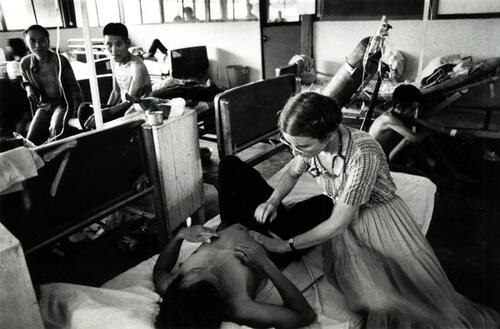
An MSF doctor examines a man from the Hmong ethnic group at the dispensary in Nam Yao. Thailand, 1982.SEBASTIAO SALGADO
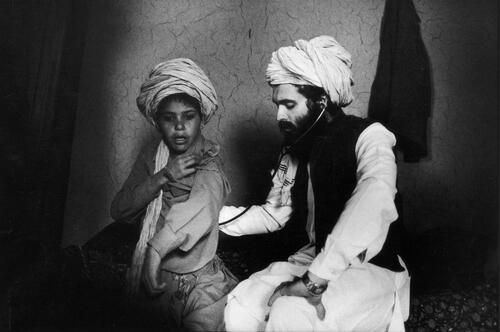
An MSF doctor examines a patient in one of the dispensaries that our teams have established in Afghanistan. 1982.BERNARD BISSON
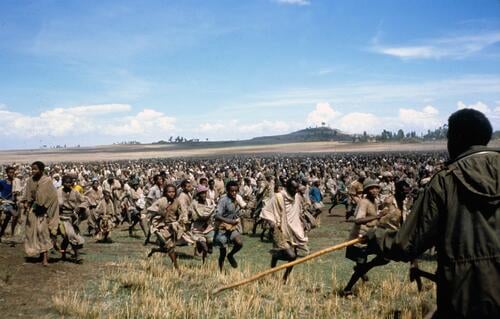
Malnutrition hits Ethiopia during the dry season. In response, we send food, medication, tents and blankets for the first time in our history. Ethiopia, 1984.GENERIC MSF
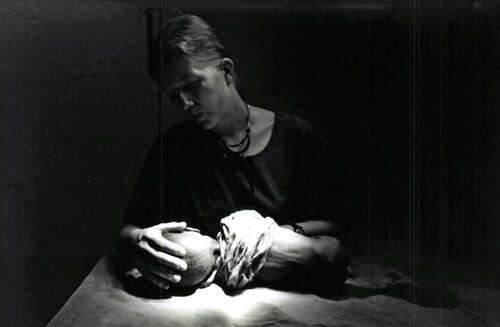
An MSF doctor performs a small incision to remove an abscess from a patient. Sudan, 1984.SEBASTIAO SALGADO
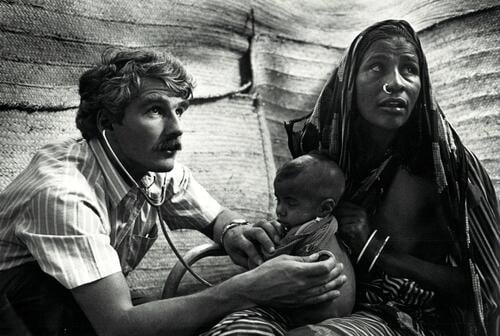
An MSF doctor examines a baby and his mother who have fled drought, famine and fighting in Ethiopia and settled in one of the refugee camps in Sudan. 1985.SEBASTIAO SALGADO

MSF teams cross the river between Nuristan and Badakhshan. Our teams respond surreptitiously in areas controlled by the Afghani resistance, which may require up to three or four weeks to reach on foot, while carrying tons of medication on the backs of donkeys. Afghanistan, 1986.DIDIER LEFEVRE
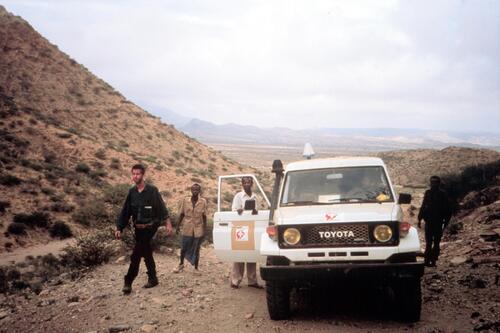
Our teams start operations in Somalia in 1986, where violence and famine are rife. We provide medical care to people wherever it’s possible. Somalia, 1989.E. REISSER
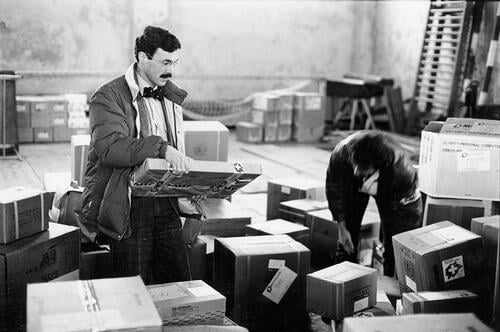
MSF logisticians prepare medical and technical supplies. Romania, 1989.ARND BRONKHORST
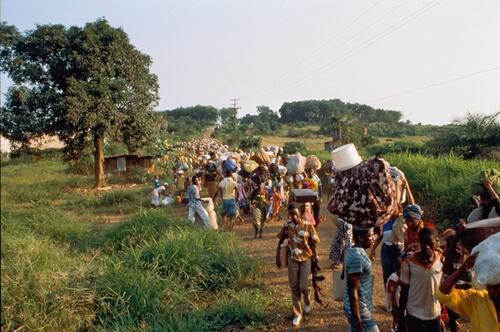
Following the outbreak of civil war in Liberia in 1989, thousands of Liberians flee the country for Côte d’Ivoire - our teams provide emergency care at the height of the fighting. Liberia, 1990.GENERIC MSFSHARE
If nothing changes, I don’t know what we’re doing here. Without food, medical treatment is meaningless.BRIGITTE VASSET, MSF MEDICAL COORDINATOR IN ETHIOPIA, 1984
TWEET THIS
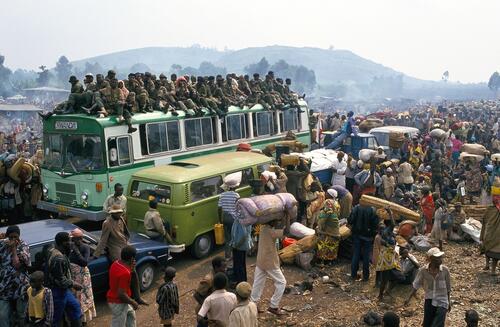
Approximately two million Rwandan refugees flee genocide and civil war to cross the border to Democratic Republic of Congo (DRC). Our teams set up one of our biggest cholera programmes to date in the camps. DRC, 1994. © ROGER JOB
The third decade: 1992 - 2001
As wars across the globe continue to wreak havoc on people’s lives, our teams respond to needs on numerous fronts. During the civil war in Yugoslavia, we provide healthcare and denounce the massacre of 8,000 civilians in Srebrenica, at the hands of Serbian troops.
We are also present during the genocide of 800,000 Tutsis and moderate Hutus in the Rwandan civil war, where we provide emergency medical care where we can. Powerless to the horrors we witness, we take an unprecedented decision on 18 June 1994, and request an international military intervention – “Doctors cannot stop a genocide".
In 1999 we are awarded the Nobel Peace Prize. The judges choose MSF “in recognition of the organisation’s pioneering humanitarian work on several continents”. The proceeds from MSF’s Nobel Peace prize award are used to set up The Access Campaign, designed to to break down policy, legal, and political barriers that block access to medicines for patients in our projects and beyond.
THIRD DECADE01/ 09
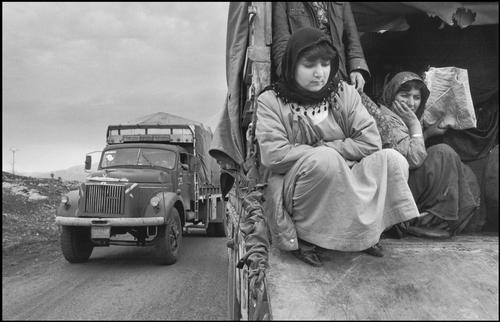
Internally displaced Kurds seek refuge near the Turkish-Iraqi border. In just a couple of days, thousands of tents appear - about 55,000 Kurds fleeing Saddam Hussein's troops during the Gulf War. We respond with one of our largest emergency medical interventions to date. Iraq, 1992.JOHN VINK/MAPS
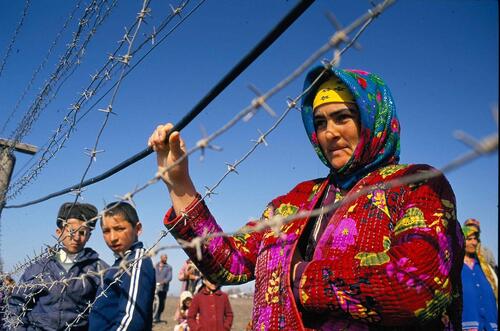
A woman waits at the at the Tajikistan-Afghanistan border, hoping to see some family members among the refugees returning to Tajikistan. As one of the worst droughts in over 30 years hits Afghanistan, MSF teams respond with medical care and relief items. Tajikistan, 1993. ROGER JOB
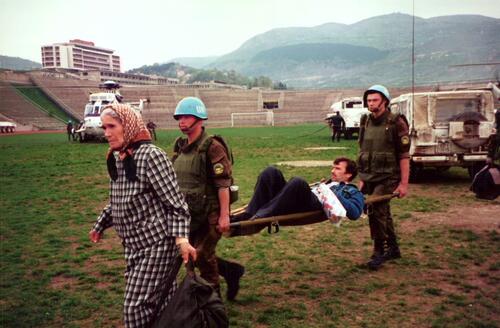
UN Blue Helmet staff transport an injured person by helicopter. Our teams provide medical and surgical assistance to people in Srebrenica, Zepa and Gorazde’s enclaves. Bosnia, 1994.GENERIC MSF
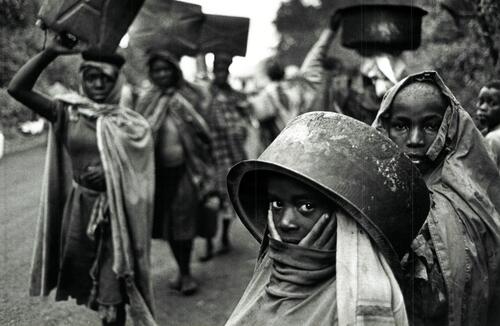
In July 1994, between 600,000 and one million Rwandan refugees arrive in Kivu, DRC. In response to the expected high mortality rates due to a lack of food and water, as well as a cholera outbreak, our teams provide medical care and clean drinking water. DRC, 1994. SEBASTIAO SALGADO
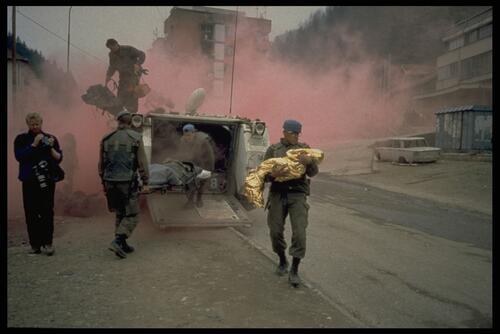
A peacekeeper carries a child as thousands of civilians flee the bombing of Srebrenica. Following the ethnic cleansing campaign carried out by Bosnian Serb forces in Eastern Bosnia, our teams provide aid for refugees. Bosnia & Herzegovina, 1995. TH. PONTUS
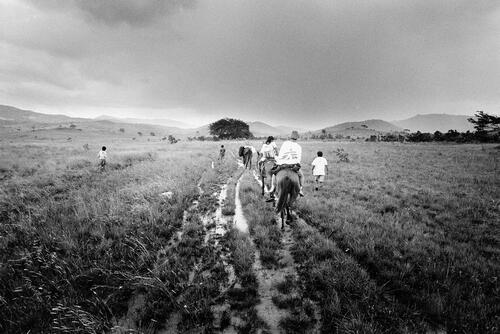
Our teams deliver emergency aid to the Yanomami Indians, who are threatened with extinction due to a malaria epidemic. The native people here suffer mostly due to their natural habitat, the rain forest, which is rapidly decreasing. Brazil, 1996. REMCO BOHLE
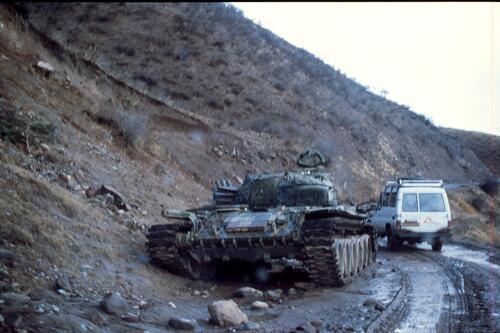
As civil war breaks out in Tajikistan, hundreds of thousands of people flee their homes. Our teams initiate programmes for medical aid and the distribution of essential medicines and food, and also give training to local health workers. Tajikistan, 1998.BERNICE VREEZAAM

MSF teams deliver medical care and essential items to refugees from Kosovo in Albania. In 1998, Serbian police begin attacking villages inhabited by ethnic Albanians. By the end of March 1999, as many as 300,000 Kosovans are driven out of their homes. Albania, 1999.ROGER JOB
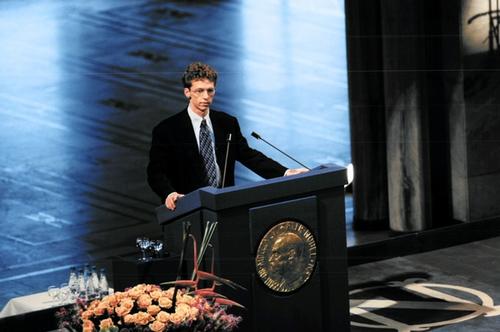
MSF is awarded the Nobel Peace Prize in 1999 in recognition of its pioneering humanitarian work around the world. Norway, 1999.PATRICK ROBERTSHARE
The only decent position was to break completely with humanitarian neutrality and call for military intervention against the perpetrators of the genocide.JEAN-HERVÉ BRADOL, MSF PROJECT COORDINATOR IN RWANDA, 1994
TWEET THIS
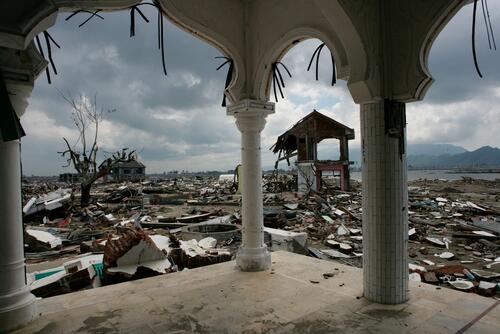
Our teams carry out an emergency response in remote villages along the coastline of Banda Aceh following the earthquake and tsunami that struck the Indian Ocean countries. Indonesia, 2005.© FRANCESCO ZIZOLA/NOOR
The fourth decade: 2002 - 2011
In the early noughties, our teams start treating people living with HIV with antiretroviral therapy in seven countries. Our teams also continue to tackle the deadly effects of malaria across Africa, while continuing to provide healthcare and medicine during a famine in Angola.
In 2002, we begin working in Italy, providing medical care to people crossing the Mediterranean to Europe in Lampedusa reception centre. Meanwhile we provide medical care for those affected by war and conflict, namely in Iraq, Afghanistan and Sri Lanka. In addition, our teams are some of the first responders after the Tsunami in South-East Asia and the deadly earthquake in Haiti in 2010.
FOURTH DECADE01/ 11
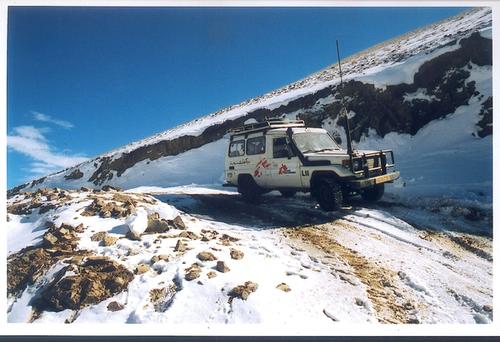
Our team crosses the mountains in Afghanistan, where we provide myriad healthcare. Afghanistan, 2001.ALAIN FRILET
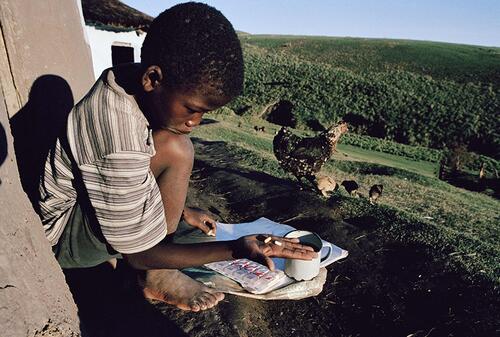
A child checks his AIDS medication. In 2002, our teams implement the pilot programme ‘mother to child transmission’ (MTCT) in Khayelitsha, South Africa, which in effect prevents several hundreds of babies from being born with HIV. South Africa, 2002.GIDEON MENDEL
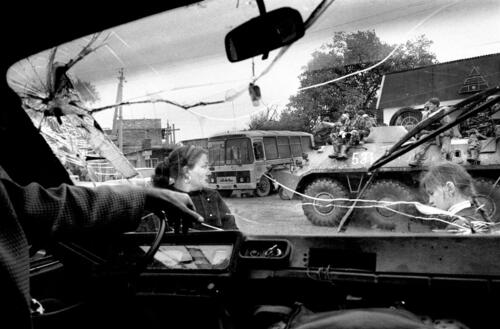
A Russian tank next to a market in Chechnya, where living conditions for people are extremely challenging after almost a decade of war. MSF denounces the massive use of violence against civilians by Russian forces. Russian Federation, 2003. EDDY VAN WESSEL
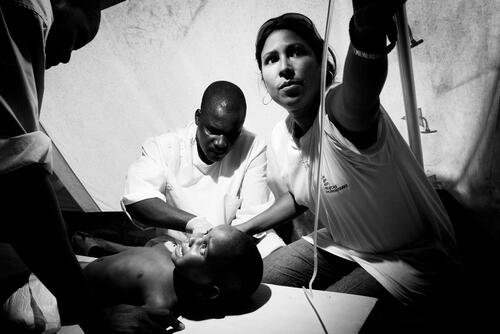
MSF medical teams treat a child with cholera in Luanda. As famine hits Angola, we run one of the largest projects in our history, with more than 2,000 members of staff working throughout the country Angola, 2006.PAOLO PELLEGRIN/MAGNUM PHOTOS
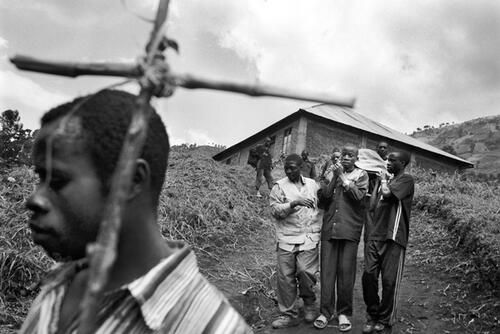
The body of a family member is carried to the village for burial in North Kivu, DRC. We support the Masisi hospital in North Kivu province, where our teams provide surgical assistance and basic healthcare consultations as well as nutritional support. DRC, 2007.CÉDRIC GERBEHAYE/MAPS
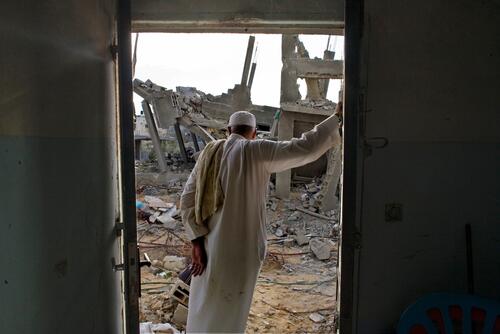
People slowly return to their heavily damaged or totally destroyed homes, as fierce fighting between the Israeli army and Hamas wreaks havoc in Gaza City. Our teams support hospitals in Gaza during the conflict. Palestine, 2009.BRUNO STEVENS
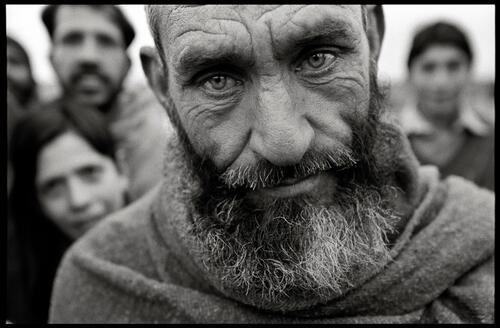
People inside Kacha Ghari camp, Peshawar. Formerly a camp for Afghan Refugees this camp now hosts internally displaced people fleeing the fighting in Pakistan. Our teams prioritise people who are living in improvised camps and those staying with host families. Pakistan, 2009. SEB GEO

Rohingya refugees flee repression and persecution in Myanmar and seek refuge in neighbouring Bangladesh. Our teams set up emergency and relief activities for the hundreds of thousands of people living in dire conditions without access to basic services. Bangladesh, 2009.ESPEN RASMUSSEN
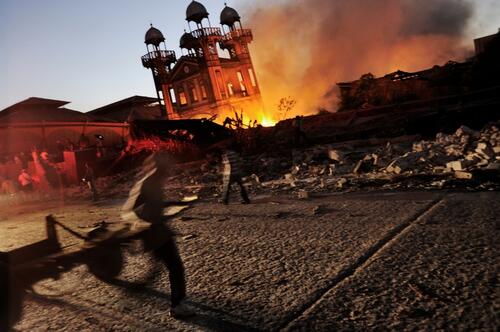
After a massive earthquake hits Haiti, we launch one of our largest-ever interventions, expanding the number of projects in the country from three to 26. Haiti, 2010. KADIR VAN LOHUIZEN/NOOR
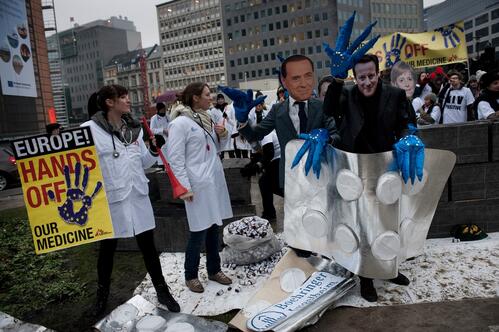
MSF, together with AIDS groups, protest in Africa, Asia and Europe, demanding that the EU stops pursuing measures that undermine India’s role as a producer of affordable, lifesaving, generic medicines. Belgium, 2010.BRUNO DE COCK
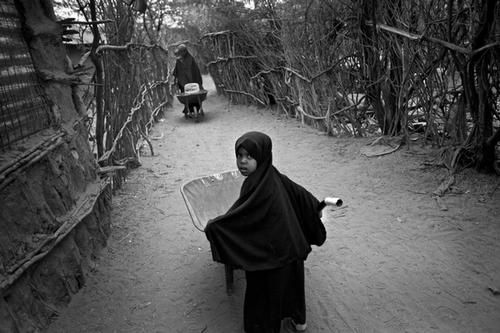
Thousands of families in desperate need of food and water trek for days from Somalia to the Dadaab refugee camp in eastern Kenya. The drought is the worst in 60 years in East Africa. Kenya, 2011.ROBIN HAMMOND/PANOS PICTURESSHARE
Stop these attacks. We will not leave patients behind. And we will not be silent. Seeking or providing healthcare must not be a death sentence.DR JOANNE LIU TO THE UNITED NATIONS SECURITY COUNCIL
TWEET THIS
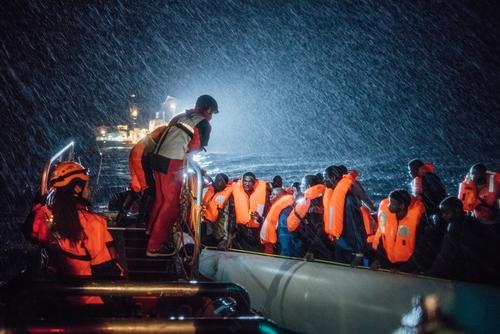
MSF and SOS Mediterannée search and rescue teams perform a rescue mission after sighting a boat in distress off the northern coast of Libya. Central Mediterranean, 2016.© KEVIN MCELVANEY
The fifth decade: 2012 - 2021
As the Arab Spring erupts across the Middle East and North Africa, our teams respond to multiple conflicts, particularly in Syria, Yemen and Iraq, where we work throughout the decade, providing emergency and specialised care.
This decade also sees our teams fighting against deadly disease outbreaks and epidemics across the world such as measles and cholera. Between 2014-2016 in West Africa, we lead the response to the largest Ebola epidemic in history, where the disease infects more than 25,000 people and claims more than 11,000 lives.
With the outbreak of the COVID-19 pandemic, we mobilise teams across the world, including Europe, leading us to work in more than 80 countries at the peak of 2020.
FIFTH DECADE01/ 10
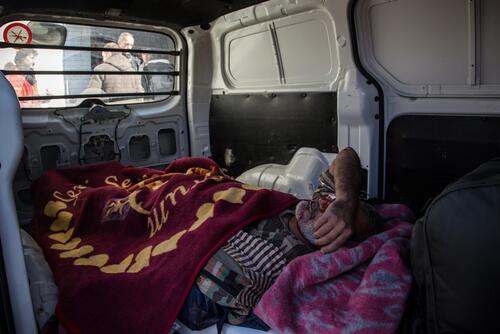
A man injured in a firefight is prepared for transfer to Turkey for further treatment in an MSF ambulance after receiving treatment at a hospital in northern Syria. Syria, 2013.NICOLE TUNG
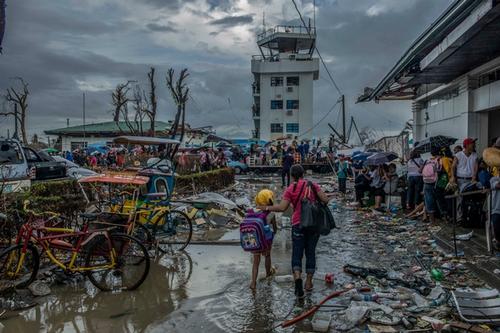
After a typhoon rocks Tacloban, in the Philippines, our teams arrive to provide assistance to survivors. Philippines, 2013.YANN LIBESSART/MSF
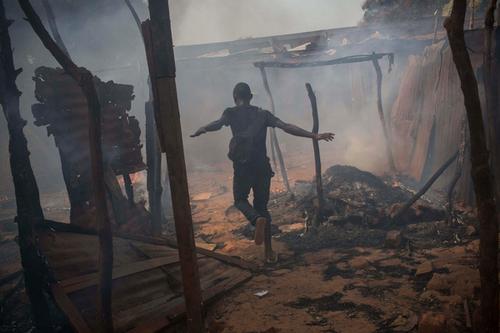
A man on the outskirts of Bangui runs through looted and burned houses of Muslims who have fled. CAR, 2014.MARCUS BLEASDALE/VII
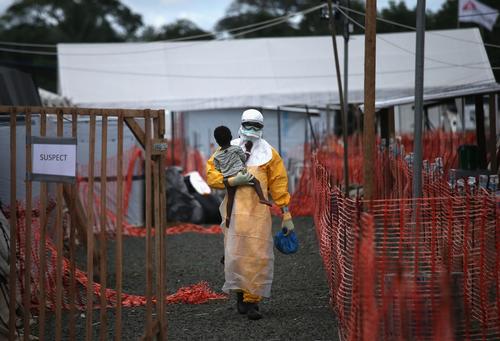
An MSF health worker in protective clothing carries a child suspected of having Ebola in our treatment centre in Paynesville. Liberia, 2014.JOHN MOORE/GETTY IMAGES
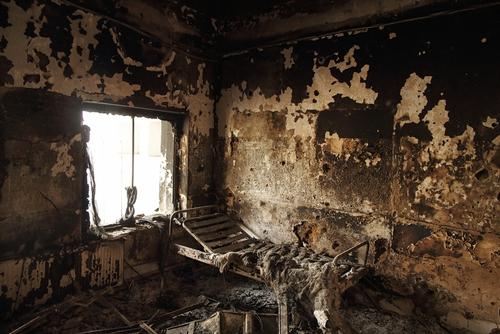
The remains of a bed frame in the MSF Trauma Centre in Kunduz, northern Afghanistan, following 3 October US airstrike on the facility, which killed more than 20 MSF staff members and patients. Afghanistan, 10 October 2015. ANDREW QUILTY
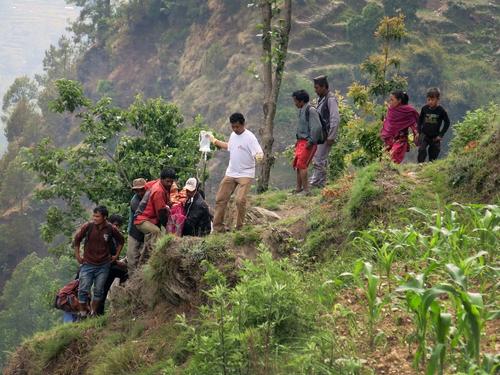
An MSF team evacuates a pregnant woman in labour from the Nepalese mountains. Nepal, 2015.EMMA PEDLEY/MSF
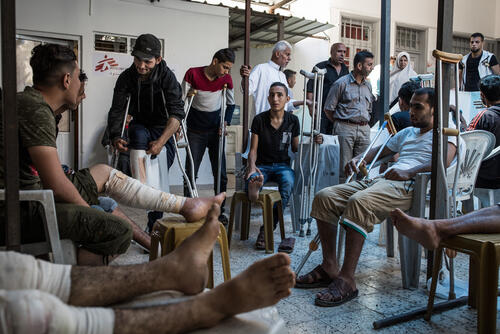
Palestinians injured during the Great March of Return visit our post-operating centre daily to change their bandages. Palestine, 2018.LAURENCE GEAI
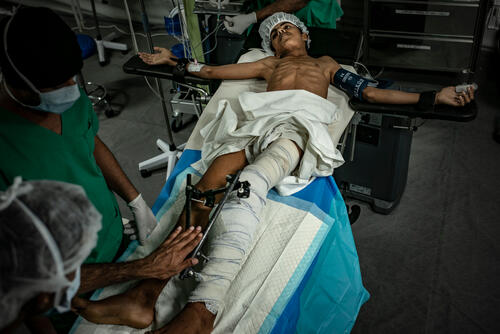
Our team treat a war-wounded person from the frontlines of Hodeidah and Taiz. Yemen, 2018.GUILLAUME BINET/MYOP
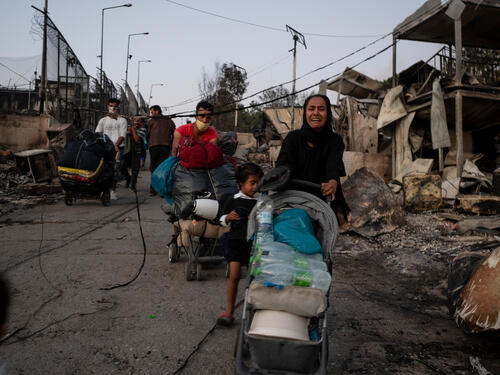
Our teams provide assistance to refugees and asylum seekers fleeing Moria reception centre in Lesbos the day after a fire destroyed the camp. Greece, 2020.ENRI CANAJ/MAGNUM
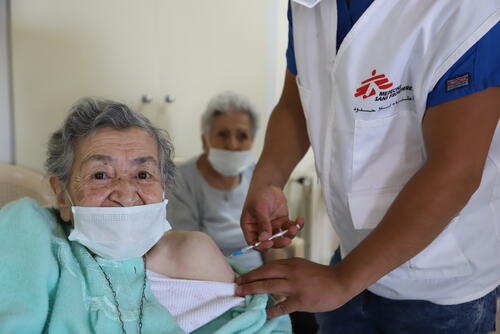
Our mobile vaccination team vaccinates an elderly woman at a nursing home against COVID-19 in Shayle. Lebanon, 2021.TRACY MAKHLOUF/MSFSHARE

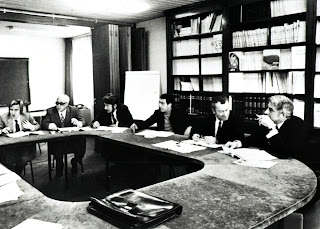
Comments
Post a Comment
If you are a member of XUNICEF, you can comment directly on a post. Or, send your comments to us at xunicef.news.views@gmail.com and we will publish them for you.